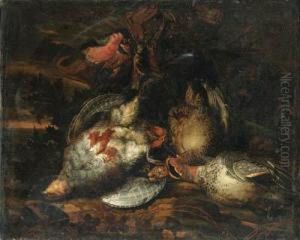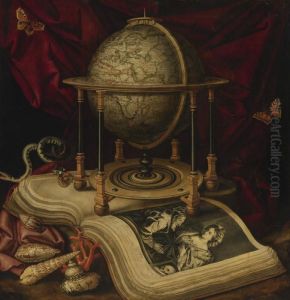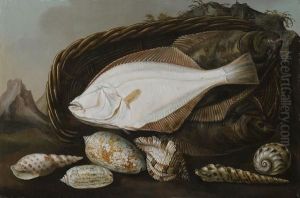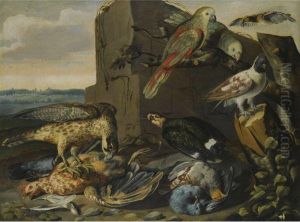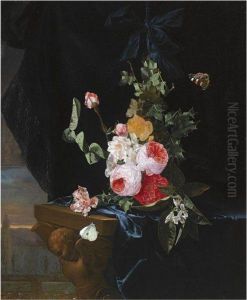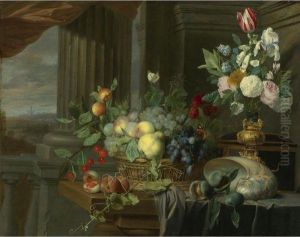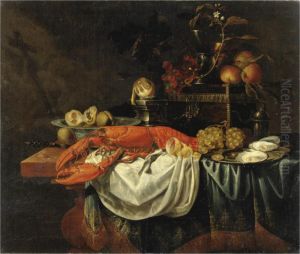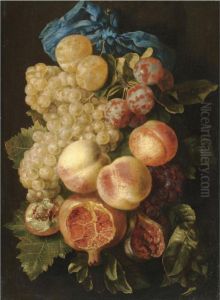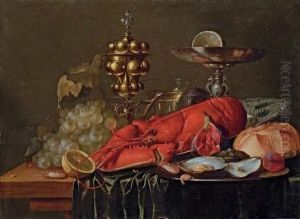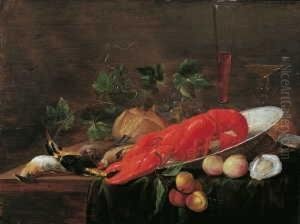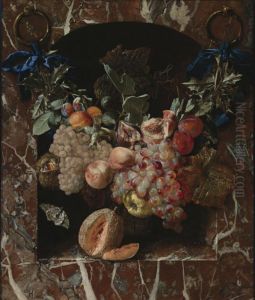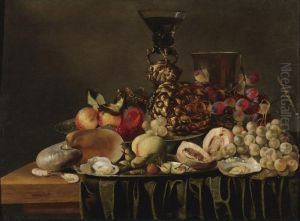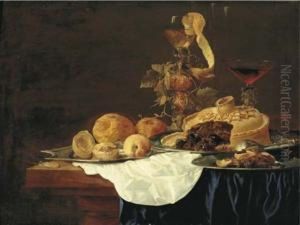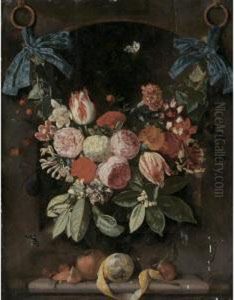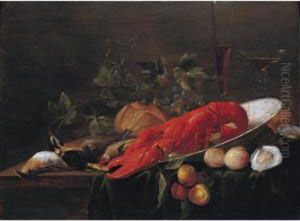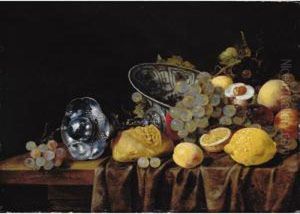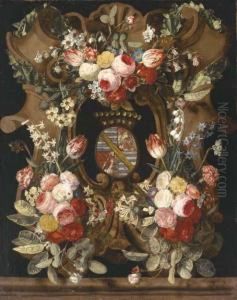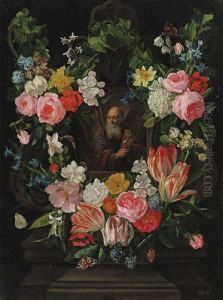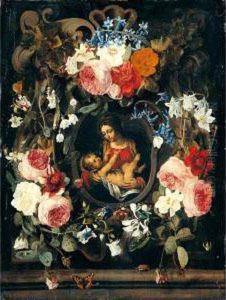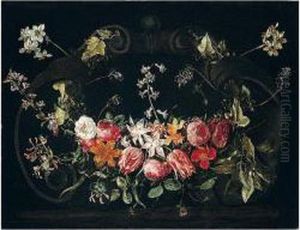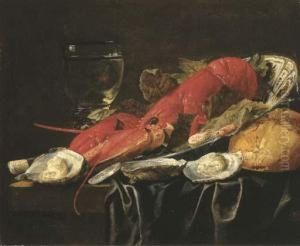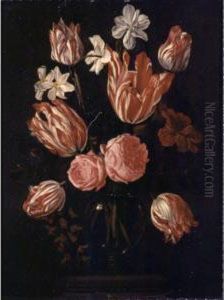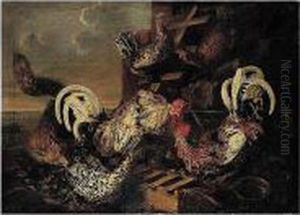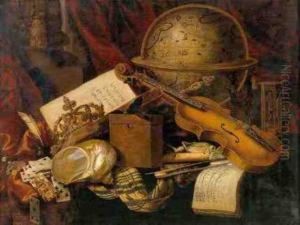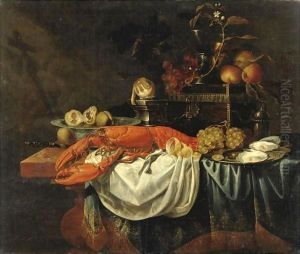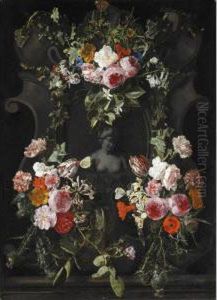Carstiaen Luyckx Paintings
Carstiaen Luyckx was a Flemish painter who is known for his contributions to still life painting during the 17th century. Born in 1623 in Antwerp, he became a master in the city's Guild of Saint Luke in 1645. Luyckx's work is characteristic of the Baroque period, with a particular focus on vanitas and pronkstilleven (ostentatious still life) themes, which were popular in the Dutch and Flemish art of the time.
Luyckx's paintings often depicted objects that symbolize the transience of life, such as skulls, flowers, and soap bubbles, alongside symbols of wealth and knowledge like books, musical instruments, and scientific apparatus. His compositions are noted for their meticulous detail, rich color palette, and the skillful rendering of different textures.
Although Luyckx spent the majority of his career in Antwerp, historical records suggest that he may have traveled to Vienna and worked at the imperial court. This period is thought to have influenced his work, as some of his paintings reflect the opulence found in the courtly environments of the time.
Despite the quality of his work, Carstiaen Luyckx did not achieve the same level of fame as some of his contemporaries, such as Willem Kalf or Jan Davidsz. de Heem. As a result, details about his life and career are less documented, and the exact date of his death remains uncertain. The last known record of Luyckx dates to 1657, and it is believed that he died at some point thereafter. His works, however, continue to be appreciated for their contribution to the still life genre and provide insight into the artistic and cultural interests of the Flemish Baroque period.
